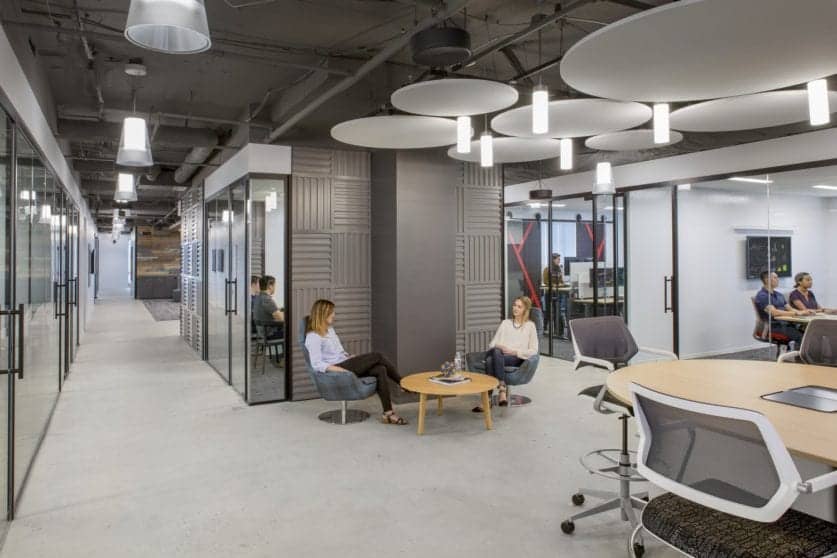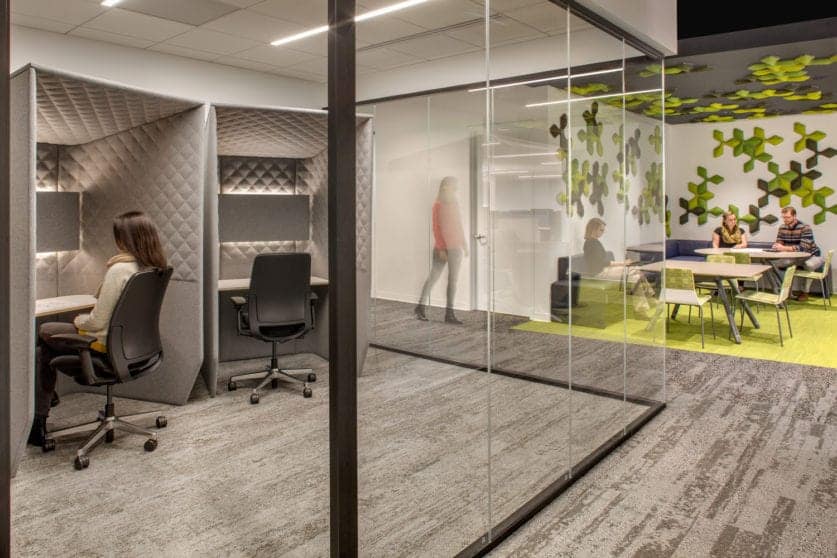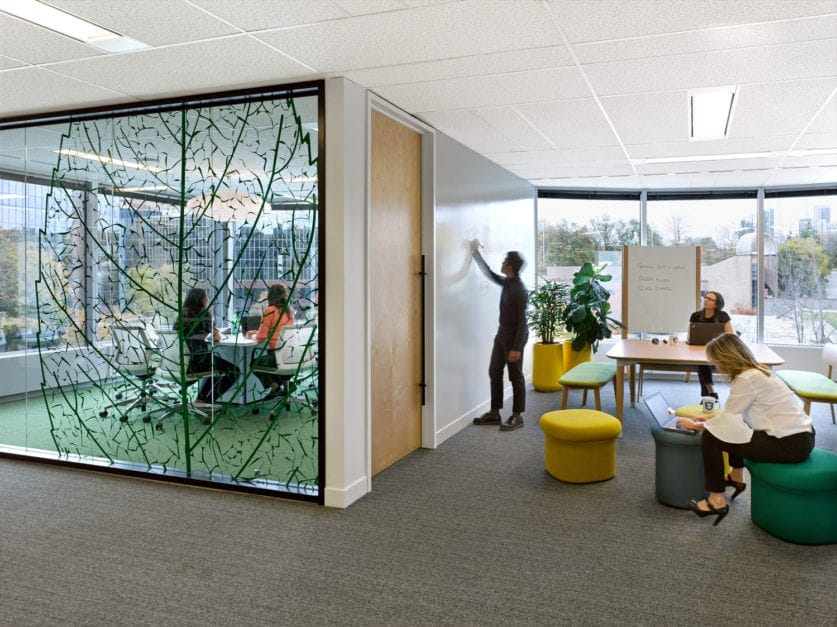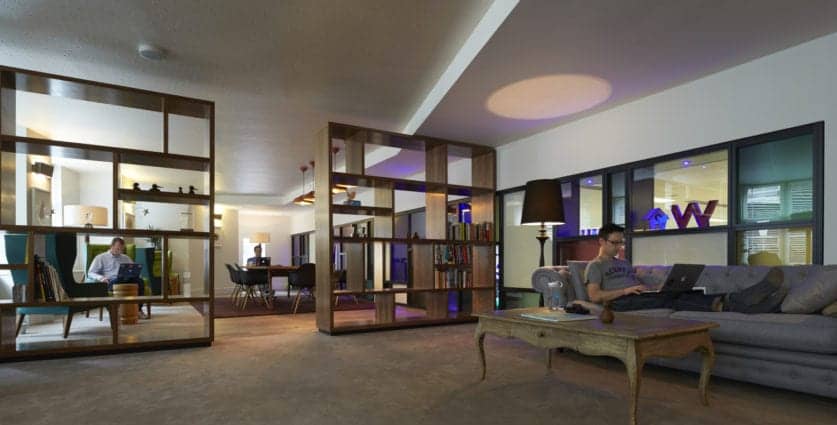By Elaine Du Preez | Design Manager | May 1, 2018
For years, interior designers have looked at acoustic design, particularly in open plan offices, as somewhat of an esoteric dark art. Design solutions have ranged from absorptive ceilings to baffles and even plantings. Vertical and horizontal surfaces covered in expensive materials and scattered throughout a design seem to be the standard solution. But what if acoustic comfort hinges on something entirely unexpected?
I recently attended a series of workshops on psychoacoustics that examined the psychological and physiological effect of acoustics. Simply put, how do we feel and react to sound? The hypothesis is straightforward: different people react to different acoustic environments in different ways. That’s a great sentence but it doesn’t say much! Understanding the relationship between sound and our reaction to it is the key to designing better acoustic environments.
Research shows two influencing factors: your personality profile and your sensory profile, and both are sub-divided. Most people are familiar with the personality profile sub-divisions of introvert and extrovert.
Sensory profiles are similarly polar. In essence, you have those who seek sensory stimulation, and those who avoid it. Those who seek it have a lower level of natural sensory alertness and seek additional sensory input to create a higher level of alertness. This enables them to stay interested and maintain their focus. Those who avoid sensory input have a naturally higher level of sensory alertness and avoid additional sensory input to prevent becoming over stimulated.

Confidential Client, Milan. Photo © Barbara Corsico.
Sensory profiles do not necessarily correlate with introversion or extroversion. You can be an introvert who seeks sensory stimulation. In other words, you like a buzz around you when you work. This means you may end up in a coffee shop, working on your laptop, enjoying the anonymity and the surrounding energy. The goal for both sensory profiles is to realize the optimum level of stimulation for an alert and productive state.
The difficulty of the task at hand is a further complication to finding the right balance. Even the most extroverted, sensory seeking person sometimes needs a quiet space to perform extremely complex tasks.
At opposite ends of the spectrum, the two profiles pose a design conundrum. An awareness of sensory profiles, unnoted in the past, and their impact on the workforce adds a new layer of complexity to the design challenge. The current popular approach to designing an office with a buzz to stimulate collaboration and creativity no longer works as a comprehensive plan.
But the solution is simple: choice. Give users options and control over their environment; empower them to either retreat or join the communal hubbub, depending on the task. As designers we need to keep this in mind to ensure greater user satisfaction and success for our clients. Sounds like a win/win proposition!




